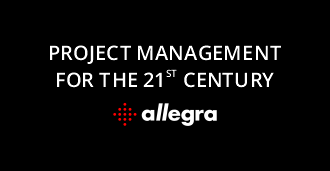Project Management Standards
Overview
All classic project management methods focus on detailed specifications, long-term planning, and structures. However, even though certain aspects of different project management standards are similar, the methods differ fundamentally from each other in several ways. Since each project management method will influence project work and process design in a company, we need to be careful about which method we choose. Our chosen method must meet the needs and expectations of the customer as well as the corporate culture.
Which Project Management Standards Exist?
Three classic project management standards currently determine the approach of professional project managers in companies and organizations:
- PMI/PMBOK: the standard of the American Project Management Institute
- IPMA: a methodology of the International Project Management Association
- PRINCE2: a standard used primarily in Great Britain and the Netherlands
PMI/PMBOK, IPMA, and PRINCE2 each reflect the project cultures of their countries of origin. Taken as a whole, they cover the entire range between closed and open systems, numbers-based, and competence-based corporate cultures.
PMBOK: The Global Standard
PMI’s method, which is based on the standardized processes and tools of the PMBOK® Guide, lets us define priorities, depth and intensity of the project depending on the situation. Thus, we can create customized project management for the company. PMI is characterized by a strong focus on monetary values and performance figures, as well as a high degree of scalability.
Its strong focus on scalable parameters brings a lot of transparency to a company, but requires disclosing a lot of data. This can cause problems in companies under certain circumstances. The advantages and disadvantages of using PMI must therefore be weighed carefully.
IPMA: German Thoroughness
One of the most common project management standards in the German-speaking world is IPMA. IPMA has a toolbox character, just like PMBOK. However, number-based parameters play a subordinate role, and scalability is also less important.
Instead, IPMA focuses on people: the project manager and project participants with their individual competencies are at the forefront. The ability to adapt tasks and make competence-based decisions is most pronounced in IPMA.
PRINCE2: Proven Classic
Compared to the other two project management standards, the British standard PRINCE2 strongly defines the roles of project staff, stakeholders, and managers. It is a closed system with strict instructions that project managers and employees have to follow exactly. Stakeholders, all the way up to top management, must also conform to the PRINCE2 guidelines, which can sometimes lead to a great deal of potential for conflict.
There is hardly any room for profiling individual employees. Although the standard involves a high level of implementation effort, it also offers numerous advantages: Due to the clear specifications of the methodology, projects with PRINCE2 have a lot of independence. Management intervenes only in exceptional situations.
Due to high pressure to innovate, companies in the information and telecommunications technology sector in particular are adapting their project management practices as new product categories are developed. A hybrid approach that combines classic and agile project management principles is increasingly gaining acceptance. This makes it possible to respond more flexibly to ongoing change requirements and significantly shorten project durations. The Scrum method is also becoming more popular for larger projects. Take a look at the term “Scrum of Scrums”, if you’re curious.
Scrum: Agile Project Management as an Alternative/Supplement to Classic Methods
The main priorities of agile project management– in contrast to classic project management standards– are individuals and interactions, functioning products, and collaboration with the customer. Tools, processes, documentation and contract negotiations, on the other hand, play a rather subordinate role.
Scrum, currently the best-known agile project management method, focuses on the shortest possible design phase and the subsequent regular delivery of functional and quality-assured intermediate products at short intervals. For this purpose, multiple short sprints are already carried out following the definition of the project framework and initial requirements. Here, the requirements for the intermediate products are analyzed, followed by design, implementation and testing. This approach enables rapid feedback between the project participants as well as flexible adaptation of the implementation and, if necessary, of the objective.
Choosing the Right Method
It is imperative that the standard chosen for project management fits the client’s needs and corporate culture. The following questions, among others, are helpful in selecting the methodology:
- Is there an open corporate culture based on trust?
- How does your company understand leadership?
- How does your company measure performance?
- Can you define the project goal at the start of the project?
- How process-driven are the projects?
- How relevant are key figures for the work in the project?
Certifications: IPMA, PMI/PMBOK, and PRINCE2
Project management has long since become a common form of work in public authorities, companies and organizations. Project staff and managers with a wide range of experience and qualifications put their methodological knowledge at the service of achieving goals all over the world and throughout Germany. Ultimately, success is the deciding factor. Recently, however, the job description of the project manager has come under scrutiny: What exactly distinguishes professional project personnel? How can it be determined whether the project manager actually possesses profound knowledge in relation to one of the well-known project management standards?
What initially looked like a new source of income for professional associations is becoming increasingly important for companies and project managers. The possibility of having individual project manager competence tested and certified by an independent body is more important than ever. Project clients can be sure that they have contracted an expert with sound methodological knowledge. Better project results and more efficient project processes can be expected. Companies can have concrete proof of an employee’s skill set and can thus set and document quality standards. This improves the company’s image and gives it a clear advantage over its competitors. But that’s not all that’s beneficial: internally, it also enables more targeted personnel development.
Three professional associations currently offer the possibility of certification in Germany:
- The GPM (Deutsche Gesellschaft für Projektmanagement e.V.), which represents the German part of the globally active IPMA (International Project Management Association),
- The American PMI (Project Management Institute) and
- The APM Group (Association for Project Management Group).
Recognized trainers and institutes initially qualify project managers according to the respective methodology and prepare them for the corresponding examinations. However, the certification procedures of the individual associations differ in terms of methodology, certification levels and costs. Their level of dissemination and awareness also differs at home and abroad. It is therefore highly advisable to study the various procedures and their respective advantages and disadvantages in detail beforehand.
GPM Certification
The certificate offered by the German Association for Project Management is the best known of all project management standards in Germany. It comprises a total of four different certification levels, from employee in the project office -Level D- to Certified Project Director with five years of experience in multi-project and program management -Level A. The process management standard applied by GPM (ICB – IPMA Competence Baseline) not only describes project management knowledge areas, but also provides a general structure of project management competence. In this way, the GPM certificate guarantees a comprehensive examination of all project management topics and focuses on the qualification of the individual. Within the company, personnel deployment and personnel development can easily be determined by the four-level certification system. A disadvantage of the certificate is the high expenditure of time and the higher fees in relation to the other procedures. Certification is not mandatory.
PMI Certification
The Project Management Institute is the world’s leading professional association, resulting in the certificate’s high international profile. PMI certifies according to the process management methodology of the PMBOK® Guide. It certifies at three levels, so you don’t need to already be a professional to be certified. Project managers with professional experience and in-depth knowledge of project management qualify for the Project Management Professional (PMP) certificate. Finally, project managers with experience in multi-project management receive the Program Management Professional (PgMP) certificate. The course is designed to be flexible and has a process-based understanding of project management. Unfortunately, the certification is only conducted in testing centers using the multiple choice method. The certification is in the foreground of the PMI procedure.
PRINCE2 Certification
Finally certified by the Association for Project Management Group, the Prince 2 project management method is used in more than 50 countries worldwide. The rights are held by AXELOS Ltd, formerly the Office of Government Commerce (OGC). Prince 2 stands for Projects in Controlled Environments and is primarily used in Great Britain and the Netherlands. The APM Group offers two degrees: Basic for beginners with initial experience and one for those with knowledge of project management terminology and processes. Practitioners make decisions in projects and report to the steering committee. The preparation effort for the Prince 2 certificate is quite low, also the organization of the certification process is kept simple. Another advantage is the separation of course and exam. A disadvantage is the examination procedure, which, as with PMI, is also only one-dimensional.
From Theory to Practice
Project management software like Allegra takes into account the vast experience gained in the PMBOK and PRINCE2 project management standards. Whether you want to align your processes with one of these frameworks, implement Scrum, work hybrid, or simply access the know-how they contain: Allegra gets you from theory to practice in a flash!
More Information
Read more to get an overview of project management methods here.




